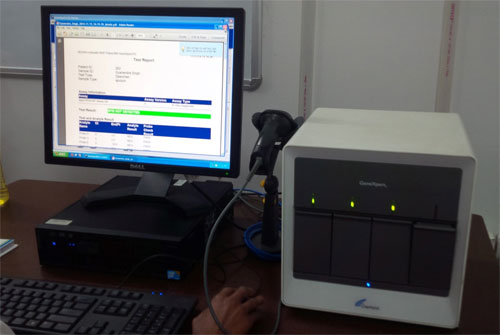Time to scale-up innovations in tuberculosis diagnosis and treatment
By Madhukar Pai
Tuberculosis (TB) was first identified as a bacterial infection by Robert Koch, a German physician, in 1882. Sadly, even after a century since Koch’s breakthrough discovery, TB continues to kill over 1.5 million people each year. Nearly 9.5 million new cases of TB occur worldwide annually. Of these, nearly 3 million TB patients are considered ‘missing’ – they are either not diagnosed, or not reported to TB control programs.
In 2014, according to WHO, about 80 percent of reported TB cases occurred in 22 countries. The six countries that stand out as having the largest number of incident cases in 2014 were India, Indonesia, Nigeria, Pakistan, People’s Republic of China and South Africa.
The TB epidemic in South Africa is characterized by high prevalence of HIV and TB co-infection, and a major issue with multidrug-resistant TB (MDR-TB). South Africa also has the largest number of people living with HIV. The combination of HIV and TB poses immense challenges for TB control, as both infections work synergistically to kill thousands.
How can we win the battle against TB? To curb the TB epidemic, we will need to reach the missing TB patients, diagnose TB without long delays, and make sure they take the full course of anti-tuberculosis therapy. Only then will they stop transmitting the infection to those around them. We also need to make sure all TB-HIV co-infected patients have access to anti-retroviral therapy.
Reaching all the missing patients and ensuring appropriate TB treatment will require doctors and TB control programs to adopt innovative tools, and modernize TB care. Thankfully, new technologies are finally here! We now have a novel, molecular test called Xpert MTB/RIF (image) that can rapidly detect TB, including drug-resistance, within 2 hours. Over 15 million Xpert tests have been performed worldwide. With more laboratories offering such rapid tests, there has been a three-fold increase in the number of multidrug-resistant (MDR) cases detected. South Africa was an early adopter of Xpert MTB/RIF, and has successfully scaled-up the technology across the country.
However, even though South Africa has implemented rapid molecular diagnostics, there are data showing long gaps between sample collection and initiation of TB treatment. Even with the use of rapid, line probe assays, time to MDR-TB treatment is over 2 months. Empirical TB management is widespread, even with Xpert roll-out, and health system weaknesses have blunted the impact of new diagnostics. So, South Africa will need to improve the efficiency of its healthcare delivery system, and ensure better linkage between diagnosis and rapid treatment.
|
|
There is some good news on the treatment front. Two new TB drugs, called bedaquiline and delamanid are already on the market in some countries. In addition, trials are underway to evaluate the efficacy of a new TB treatment called PaMZ (which contains pretomanid, moxifloxacin, and pyrazinamide). If these trials succeed, then TB patients might get new, shorter treatments within the next five years.
To make sure that TB patients benefit from new drugs, high burden countries will need to streamline their regulatory and policy adoption processes, and proactively coordinate the introduction of new drug regimens, along with companion diagnostics that can detect drug-resistance to new regimens. In South Africa, only about half of all patients with TB and HIV are on anti-retroviral therapy. South Africa will also need to scale-up access to MDR-TB treatment. Currently, only about 50 percent of TB patients with MDR are on second-line therapy. These gaps in the TB/HIV treatment cascade need to be addressed urgently.
While we wait for better and shorter therapies, doctors and programs can improve the effectiveness of existing treatments by improving treatment adherence. Drug-sensitive TB requires a full six-month course of treatment. If adherence is poor, then drug-resistance can emerge. Indeed, this is a known problem in South Africa. There are many methods to ensure adherence, including directly observed therapy (DOT). While it is challenging for TB patients to visit health centers for DOT, we can and must harness the enormous potential offered by mobile phones to electronically monitor adherence to medications. There are other innovations such as smart medication boxes that can be used to track adherence.
We simply cannot control TB with tools that Robert Koch used. It is time for doctors, hospitals, and healthcare programs to embrace new TB technologies, and make sure TB patients get the best care that they deserve.
Madhukar Pai is a professor and Director of Global Health, and Associate Director of McGill International TB Centre at McGill University in Montreal, Canada. He is also an honorary professor at the University of Cape Town, South Africa, and a consultant to the Bill & Melinda Gates Foundation.
